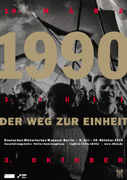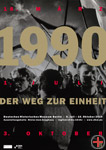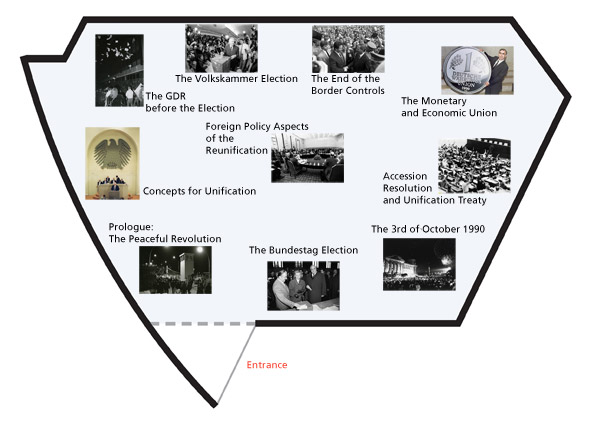


1990 – The Path to Unification
An exhibition of the German Historical Museum
Curators: Carola Jüllig, Dr. Jan Werquet, Dr. Dieter Vorsteher

When Mikhail Gorbachev came to power in the Soviet Union in 1985, it gave rise to a development that fundamentally changed the face of Europe within a few years. The ideas of Perestroika and Glasnost – reform and transparency – inspired the hopes of opposition groups and civil rights activists throughout the Soviet sphere of power. Similar to previous developments in Poland, civil rights movements in the GDR demanded democratic reforms. In the summer of 1989 the situation became increasingly aggravated: mass flight, economic collapse and massive protest actions finally brought about the end of the rule of the SED, the Socialist Unity Party.
When the Berlin Wall fell on the night of 9 November 1989 hardly anyone anticipated that within eleven months the country would cease to exist. The sudden permeability of the border shook the country in its very foundations, and the power of the SED diminished from day to day. The citizens used the freedom and latitude that had become available to develop concepts for the future of their country; these they discussed with representatives of the old order at the “Round Table”.
At the same time politicians in the Federal Republic recognized the possibility of overcoming the division of the country that had lasted for 40 years; Federal Chancellor Helmut Kohl, above all, seized this opportunity.
In the first free elections ever to take place in the German Democratic Republic (GDR) the majority voted on 18 March 1990 for a swift integration into the Federal Republic. The process leading to the accession of the five newly founded federal Länder followed the path from the Monetary, Economic and Social Union of 1 July 1990 to the Unification Treaty and the resolution of the GDR Volkskammer in August to accede to the Federal Republic.
At the same time the four Victorious Powers of the Second World War and the European Community had to be included in the process of unification. In the course of many individual talks and the “Two plus Four” negotiations the general international conditions for reunification were gradually established. Thus, on 3 October 1990 Germans could finally celebrate the “Day of German Unity” and the restitution of their sovereignty.

